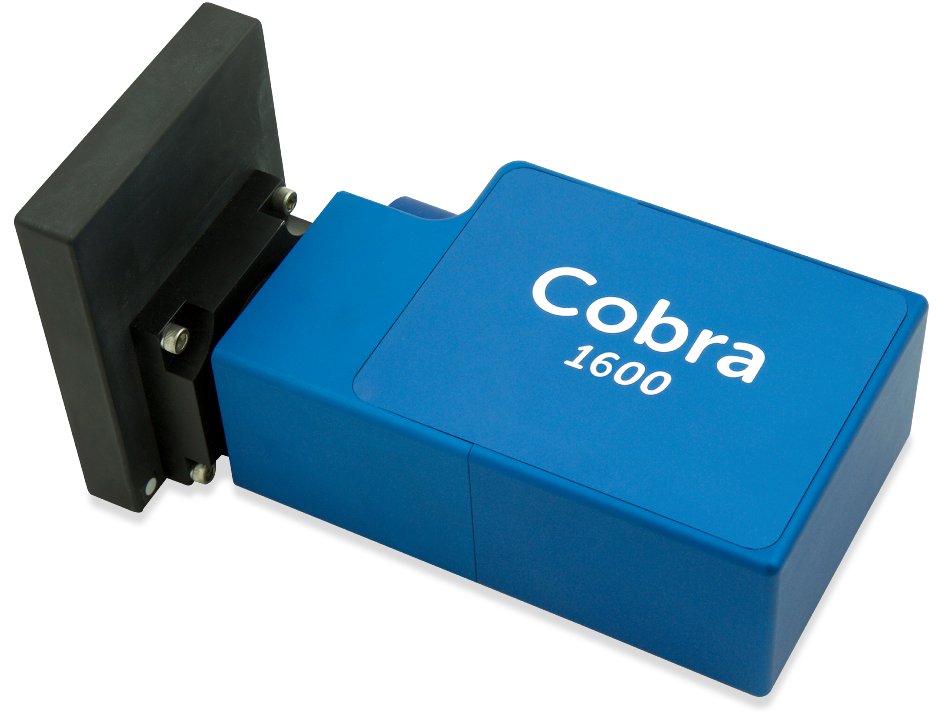Wasatch Photonics has expanded its Cobra OCT spectrometer product line with a new 1600 nm OCT spectrometer for deep-tissue, SD-OCT imaging. The Cobra 1600 builds on the company’s existing line of more than 25 off-the-shelf OCT spectrometer models at visible, 800 nm, 1050 nm, and 1300 nm wavelengths, with camera speeds up to 250 kHz. Addition of a 1600 nm model offers greater depth penetration with high contrast for highly scattering tissues and materials, with applications in cardiology, neurology, dermatology, dentistry, and non-destructive testing.

The Cobra 1600 OCT spectrometer utilizes a 240 nm bandwidth centered at 1570 nm to achieve high axial resolution when used for spectral domain optical coherence tomography (SD-OCT) or optical coherence microscopy (OCM). The Cobra 1600 offers up to 25% greater depth penetration than 1300 nm for samples that are highly scattering and low in water content, without significant loss of contrast or resolution. Offered in 76 and 147 kHz line rate models and weighing only 1.4 kg, the spectrometer can be read over Camera Link using Wasatch Photonics’ rapid access software development kits for C++, LabView, and MatLab. As part of Wasatch Photonics’ OCT spectrometer line, the Cobra 1600 uses a high efficiency optical design optimized for high sensitivity and low roll-off, based on the company’s patented, industry-leading OCT gratings. This allows the company to easily customize the spectrometer for other bandwidths or center wavelengths.
Compared to 1300 nm OCT, use of 1600 nm for SD-OCT accesses a unique wavelength region capable of penetrating deeper into samples that possess high scattering power and low water content, such as lipid-rich tissue, dental structures, and even paints and rubber. This wavelength suffers less from image-degrading multiple scattering effects and falls in a minimum for water absorption, allowing it to penetrate deeper while still providing excellent contrast provided the sample is low in water content or high in lipids. This makes 1600 nm especially well-suited to applications like the study of hippocampal formation, characterization of atherosclerotic plaques and the lipid pool beneath, analysis of dental caries, and non-destructive imaging of paint layers.
“As OCT researchers across the world start returning to the lab, we feel it is more important than ever to offer them high-quality, off-the-shelf OCT spectrometers that fit their application needs and accelerate their work,” said Dr. David Creasey, CEO of Wasatch Photonics. “This 1600 nm model fits a niche not covered by any other SD-OCT spectrometer manufacturer, and complements our existing range of OCT solutions for research and OEM at visible through NIR wavelengths. If the Cobra 1600 can save 6 months of development time and capture better images for even one research group to further our understanding of the brain or heart-damaging plaque formation in arteries, then we’ve done what we set out to do.”
Wasatch Photonics’ new Cobra 1600 OCT spectrometer offers superior depth penetration and enhanced image contrast for highly scattering samples or lipid-rich tissues. It is available immediately in a 240 nm bandwidth with choice of 2 camera speeds, and can be customized to select alternate bandwidths upon request. Like the company’s existing range of OCT spectrometers for visible, 800 nm, 1050, and 1300 nm wavelengths, the Cobra 1600 is available in both off-the-shelf and custom OEM spectrometer modules for applications in research and industry.